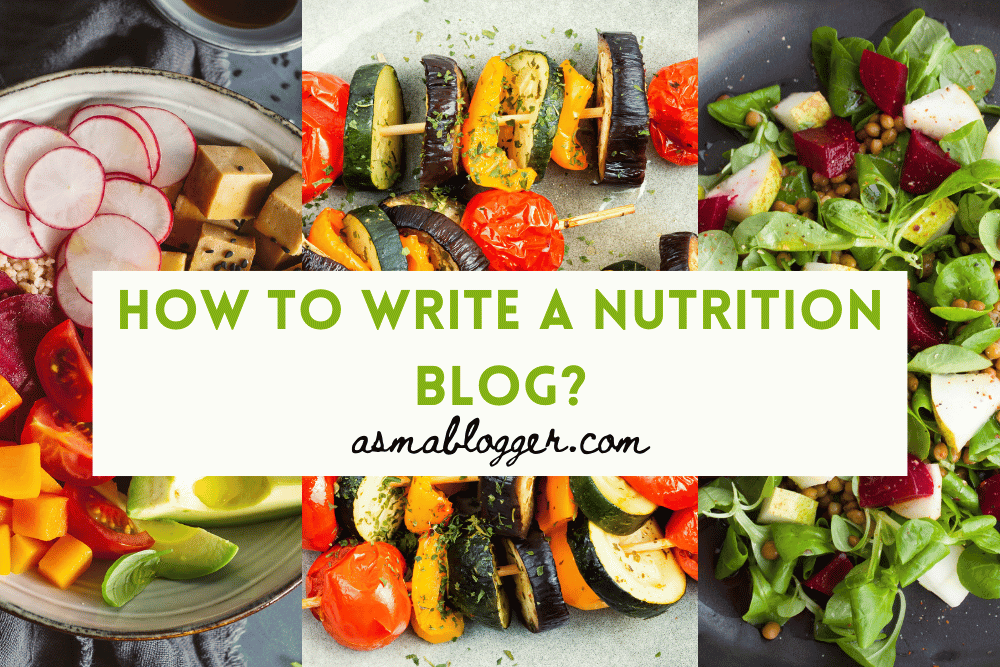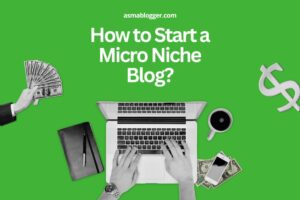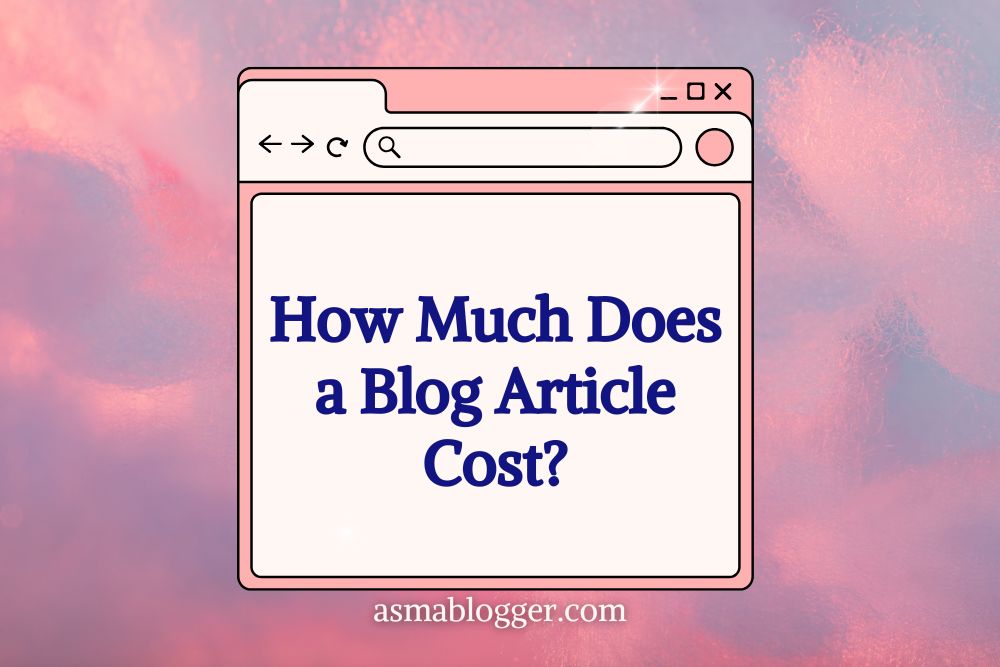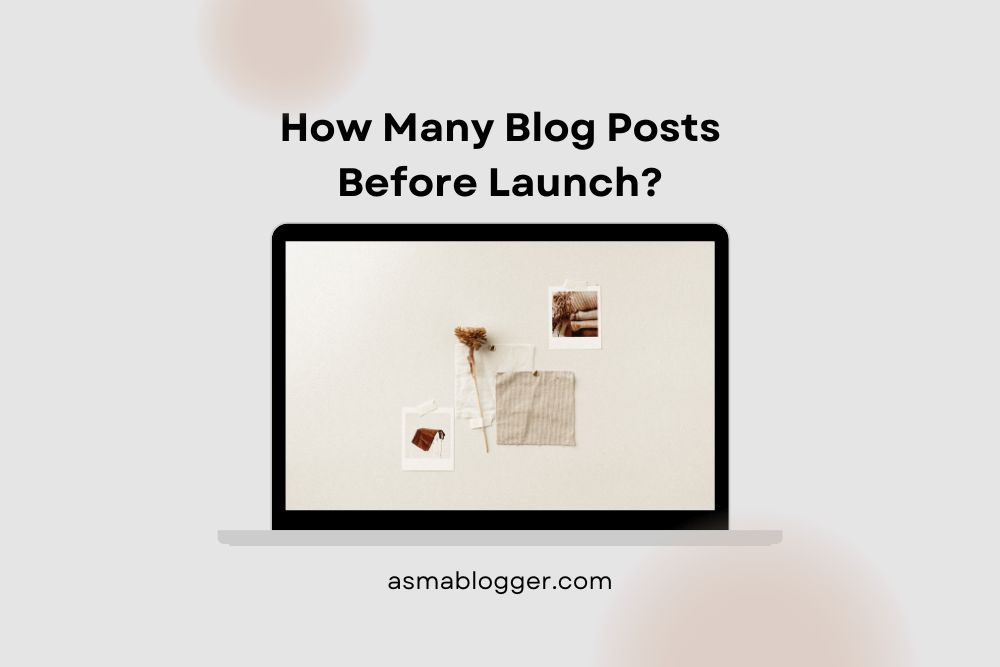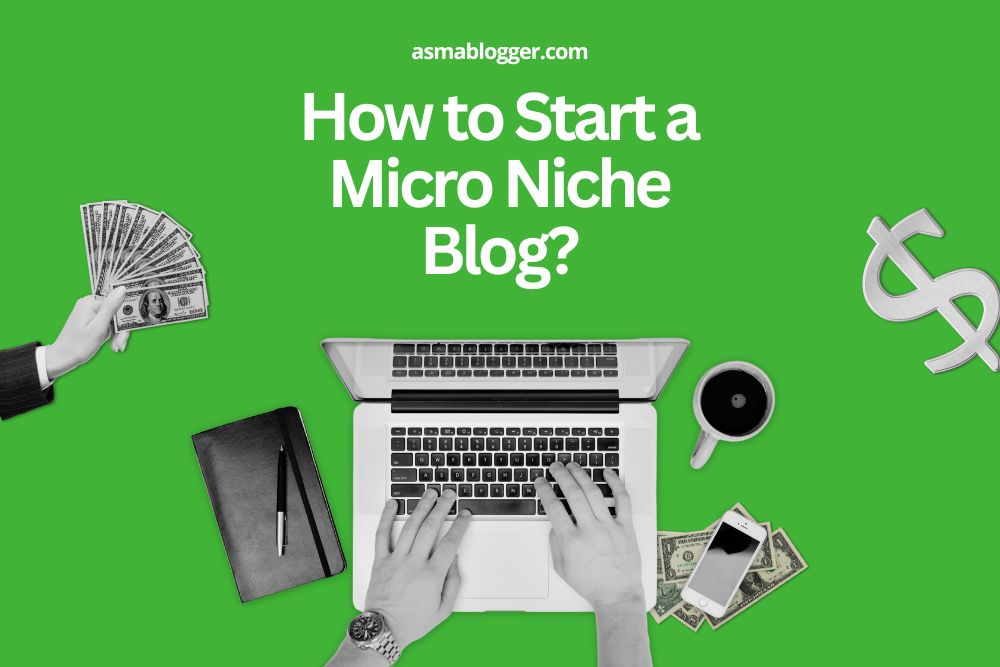Thinking of writing a nutrition blog post? You’re in great company! Did you know that 83% of internet users—about 4.44 billion people—read blog posts? This incredible number highlights a massive audience eager for insights and advice! Writing a nutrition blog isn’t just about sharing facts; it’s an opportunity to express your passion for food and health. If you’re ready to inspire and connect, let’s dive into how to write a nutrition blog that resonates with readers and builds a vibrant health and wellness community!
Table of Contents
ToggleWhy Write a Nutrition Blog?
It’s a great way to combine your passion for food and health by writing and sharing a nutrition blog:
A. Share Your Passion and Knowledge
If you love nutrition, why keep it to yourself? I thought I had to know everything before sharing, but that’s not true. People appreciate authenticity over perfection.
- Start with simple advice that works for you.
- Don’t shy away from sharing your failures.
- Keep it real; readers connect better when you’re honest about your journey.
B. Build a Community Around Health and Wellness
The best part? You’re building a community. I was surprised when readers started engaging and sharing their tips. It’s advantageous.
Here’s what I learned:
- Engage with your readers like friends—respond to comments and ask questions.
- Share your wins and struggles, like finally mastering meal prepping.
- Give readers a reason to return, such as weekly meal plans or budget tips.
Over time, your readers become part of your tribe, making the whole blogging experience worthwhile.
Step 1: Understand Your Audience in Nutrition Blogging
A. Identify Your Target Audience
Knowing your audience is key. Here’s what I suggest:
- Define Your Niche: Are you into vegan diets or sports nutrition? Focusing on a specific area can help attract loyal readers.
- Consider Demographics: Think about the age and lifestyle of your ideal audience. Tips for busy students will differ from advice for retirees.
B. Cater to Different Dietary Needs
Recognizing that readers have varied dietary needs is crucial.
- Design Your Content: If your audience is gluten-free, include specific recipes or tips. It shows you’re listening to them.
- Engage with Your Readers: Pay attention to comments and social media feedback. This can guide your future posts.
So, keep these points in mind:
- Write for your audience’s needs.
- Use polls to discover what they want to read.
Building a community around shared interests will keep your readers coming back for more!
Step 2: Find Relevant and Trending Nutrition Topics
Choosing nutrition topics to write a nutrition blog post is tricky. I get excited about a subject, then realize it’s not trending—frustrating! You have to stay on top of what’s hot, not just what interests you.
A. Research Popular Nutrition Topics
Research is the name of the game here.
- Google Trends is a great tool for seeing what’s buzzing right now. I’ve spent hours there, clicking through different terms to find gems. It’s like digging for treasure, but instead of gold, you’re finding topics people care about.
- Browse other blogs to get inspiration. I remember stumbling upon a blog that focused solely on sugar-free recipes. It was refreshing and super specific—something I hadn’t thought of.
- Social media is a gem for spotting trends. I often scroll through Instagram or TikTok to see the latest nutrition fads. People love sharing their journeys, and you can pick up some valuable insights from their posts.
B. Balance Broad and Niche Topics
Here’s where it gets tricky—you need to balance broad and niche topics. Too broad can overwhelm readers, but too niche might leave some out.
- A broad topic like “Healthy Eating” attracts a lot of interest, but it’s also pretty generic. Everyone talks about it, so standing out can be tough.
- On the flip side, writing about “Nutrition Tips for Marathon Runners” might feel like a tight squeeze. It’s specific, which is great, but what about all the casual joggers or weekend warriors out there?
- My advice? Find that sweet spot! A topic like “Quick and Nutritious Meals for Busy Moms” can grab the attention of a wider audience while still having a specific angle.
C. Do Keyword Research
Keyword research is honestly the foundation of a successful blog. Without it, you’re just hoping someone stumbles onto your content. Here’s how I go about it:
Start with Seed Keywords
First, I brainstorm a list of seed keywords. These are just ideas that come naturally when you think about your niche. If you’re in the fitness space, think about keywords like “beginner workouts” or “meal prep for weight loss.” Keep it simple at this stage—it’s more about gathering ideas than getting too specific.
Consider Search Intent
Once you have a list, think about why people are searching for these terms. Are they looking for info? Trying to buy something? I like to split these into categories—informational, transactional, or navigational. If someone’s searching for “best running shoes,” they probably want to buy something, right? But if they’re searching “how to start running,” they’re looking for advice. Understanding this saves me so much time later because I can tailor my content to what people actually want.
Analyze the Competition
I always peek at what my competitors are doing. I use tools like Semrush, Ahrefs or Google Ads to see what they’re ranking for. I’m looking for keywords where I can compete, especially those that maybe they’re not doing that great with but still have solid traffic.
Use Keyword Research Tools
Next, I dive into keyword research tools. My favorites are Semrush and Ahrefs Keywords Explorer. These tools make it super easy to find search volumes, competition levels, and even keyword variations I might not have thought of. I usually spend a few hours just playing around with different terms and jotting down everything that looks promising.
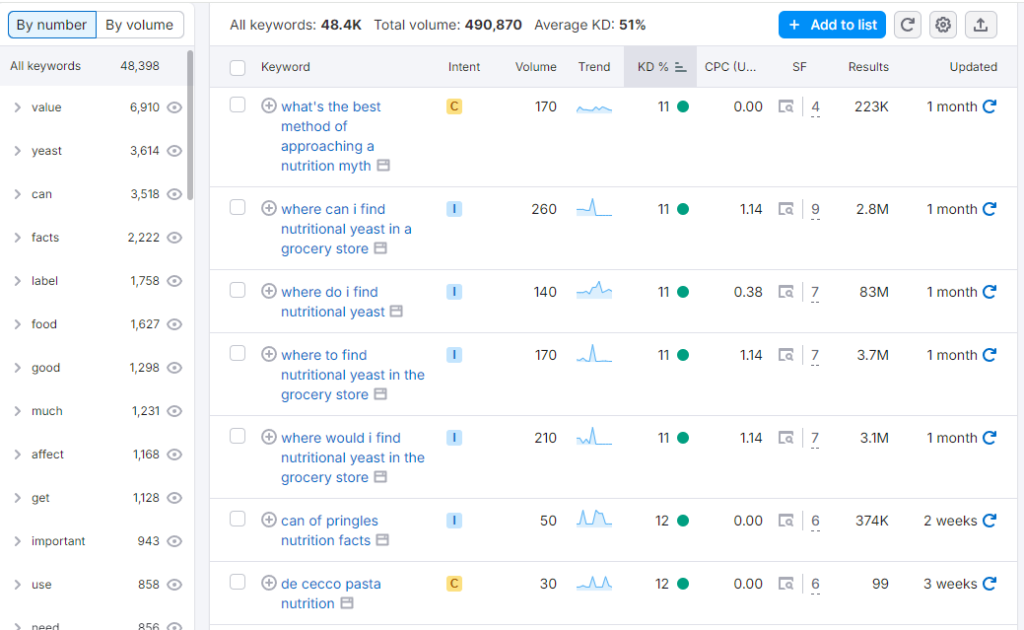
Create a Keyword List
I categorize my keywords into topics so I don’t just have a jumble of random terms. For instance, if I’m writing about healthy eating, I’ll have topics like “meal prep,” “superfoods,” and “plant-based diets,” and I’ll plug relevant keywords under each topic. It helps keep things organized and makes content planning so much easier.
Pick Your Keywords
Finally, I select the keywords that are worth targeting. I focus on a mix of short-tail keywords (like “vegan recipes”) and long-tail ones (like “easy vegan recipes for beginners”). The long-tail ones are usually less competitive but can drive a ton of traffic once you rank for them. Plus, they’re often exactly what your audience is searching for!
Step 3: Structure Your Nutrition Blog
A. Catchy Titles Make a Difference
When I started my nutrition blog, I learned titles are everything. A bland one like ‘Healthy Eating Tips’ got no clicks, but ‘7 Sneaky Ways to Eat Healthy Without Feeling Deprived’ was a game-changer!
Here are some quick tips for crafting engaging titles:
- Use Numbers: Lists are popular! “10 Superfoods You Need in Your Diet” draws readers in.
- Incorporate Power Words: Using words like “must-have” or “ultimate” makes a title pop.
- Ask Questions: Posing a question like “Are You Eating Enough Fiber?” piques curiosity.
How do you write a nutrition blog with compelling titles? Use numbers, power words, and questions to engage your audience.
B. Organize with Subheadings
Catchy title? Check. Next, keep readers hooked with subheadings. My early posts were a mess, but now I break them down, like using ‘Planning Your Meals’ and ‘Quick Recipes’ for meal prepping.
Here’s how to structure your content for better readability:
- Keep Paragraphs Short: Aim for two to three sentences. It’s way less intimidating!
- Utilize Bullet Points: These make information digestible.
- Share Personal Experiences: I often include anecdotes from my journey, like how I struggled with meal prep and finally found a system that works.
How do you write a nutrition blog that’s structured and engaging? Break your content down with subheadings and lists to improve readability.
C. Keep It Conversational
A well-structured post invites readers to stay longer and engage more. I’ve found that using simple vocabulary and including relatable stories helps me connect with my audience.
So, don’t overthink it! Let your personality shine through, and your readers will appreciate the authenticity.
Step 4: Incorporate Research and Data in Your Posts
A. Use Evidence-Based Information
Trust me, research makes a difference. I used to think sharing opinions was enough, but people want facts—especially about nutrition. So, I started pulling info from places like the CDC or USDA. It wasn’t easy at first, but now I’ve got a go-to list of reliable sources. It makes my posts so much stronger.
A quick tip: Always check your facts. Using credible sources not only boosts your content’s quality but also builds trust with your readers. It’s worth the effort!
B. Simplify Complex Nutritional Data
Explaining nutrition can be tricky. I remember trying to talk about micronutrients once, and everyone just zoned out. That’s when I realized I needed to make it simpler.
Plus, using charts or visuals helps people get it. Keep it simple, and they’ll keep reading!
Step 5: Use Multimedia to Improve Your Blog
A. Incorporate Visuals Like Infographics and Images
When I first started blogging, I thought great content was enough. But I was wrong! Adding visuals like images and infographics transformed my posts. They grab attention, break up the text, and simplify complex info. Trust me, if you can visually explain something, do it!
Here’s a little tip I picked up along the way:
- Optimize your images: Find the right size so your blog doesn’t slow down. You don’t want folks bouncing off because your page takes too long to load.
- Fill out the Alt text: This will help with SEO and will make your content more accessible to everyone.
B. Embed Videos and Interactive Content
Let’s talk videos. Embedding them has changed the game for me. Whether it’s a how-to or a funny clip, they keep people engaged. You don’t need fancy equipment—just a decent smartphone.
But, fair warning: videos can also be a little tricky.
- Aim for shorter videos that deliver your message quickly.
- Interactive content, like polls or quizzes, is also awesome! They make your audience feel involved, and honestly, it’s just fun. You can use tools like Google Forms or Typeform for this.
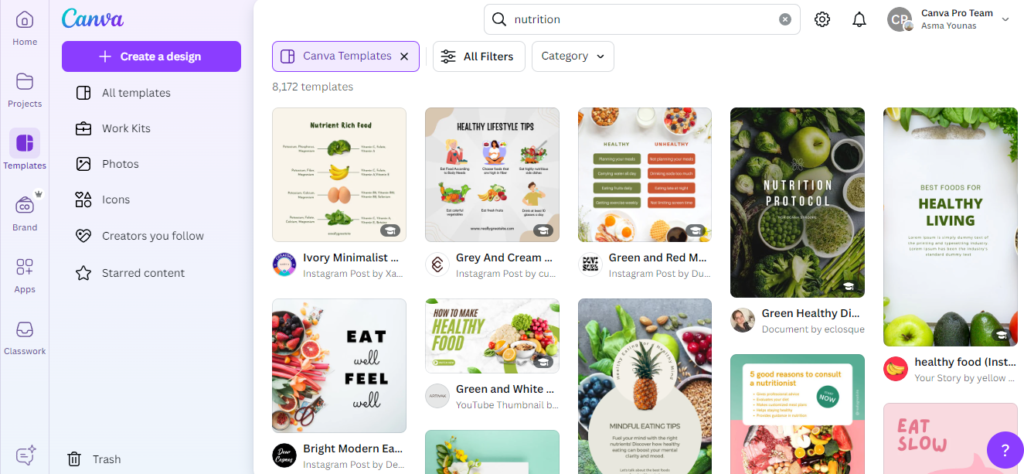
In summary, multimedia is key. It boosts user experience and makes your blog stand out. So, take up visuals and videos—you’ll be glad you did!
Step 6: Do On-Page SEO to Publish Your Blog
The goal here is to make sure each page on your blog is optimized and rank it better. Here’s how I approach it step by step.
Install Yoast SEO Plugin
If you’re using WordPress, installing Yoast SEO is the first thing I recommend. It’s like having an SEO assistant sitting right in your dashboard, guiding you through each step.
Set Your Focus Keyphrase
Next, I always start by setting a focus keyphrase for each page. This is the keyword or phrase I want to rank for. Yoast makes it easy by adding a box where you can enter this. It then analyzes how well your content matches that keyword.
Optimize the Content
Writing the actual content comes next, and I use WordPress’s fullscreen mode to avoid distractions. The key here is to naturally incorporate the focus keyphrase throughout the text without sounding robotic. I try to include the keyword in headings, the intro, and naturally in the paragraphs.
Check Readability and SEO Traffic Lights
Yoast also gives you these handy “traffic light” signals—green for good, orange for okay, and red for needs improvement. I keep tweaking the content until everything is almost green. It also checks readability, which is crucial. You don’t want your readers (or Google) bouncing because your sentences are too complicated.
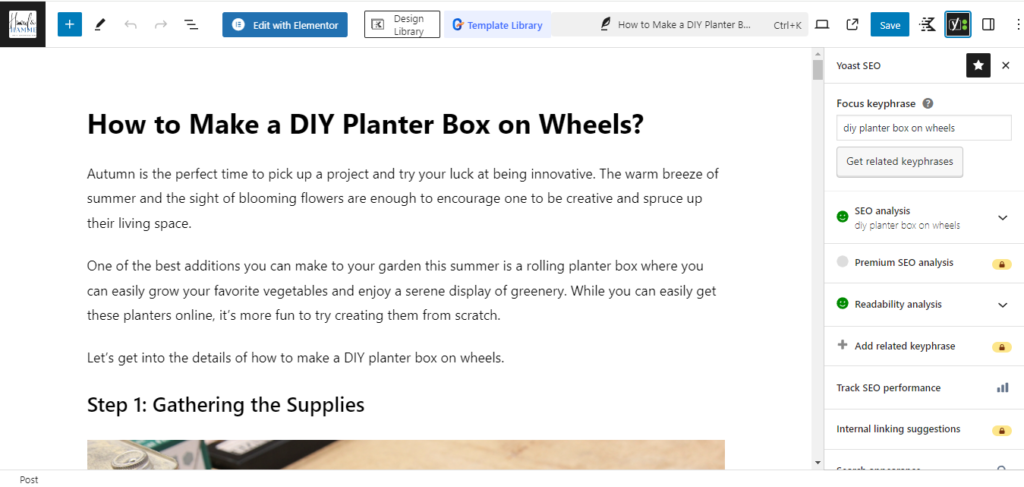
Customize Your Snippet
You can add the SEO title and meta description to make them catchy but also keyword-rich.
Don’t Forget Social Data
Lastly, I always fill out the social sharing options. Yoast lets you customize how your post will appear on Facebook and Twitter, which can make a big difference when people share your content.
Related Post: Content-Centric SEO: A Comprehensive Guide
Recap: How to Write a Nutrition Blog
Writing a nutrition blog is a rewarding way to share valuable insights and promote healthier lifestyles. Design your content to meet your audience’s specific needs, ensuring each post is both informative and relatable. Remember to adhere to safety and ethical guidelines to maintain credibility. What experiences have you had in blogging?
Share your opinions in the comments below—your insights could inspire others on their path to healthier living!
If you need professional writing services for your nutrition blog, feel free to reach out to me. I’ve written and ranked countless blog posts successfully!
Related Post: Why Hire a Health and Wellness Freelance Writer Like Me?
Common Questions: How to Write a Nutrition Blog
What is a Nutrition Blogger?
A nutrition blogger shares insights on healthy eating, dietary tips, and food-related topics through their website or social media. They often create engaging content, such as recipes, meal plans, and nutrition advice, aimed at educating and inspiring readers to make healthier food choices and improve their overall well-being.
How to Start Freelancing as a Nutritionist?
To start freelancing as a nutritionist, first, ensure you have the necessary qualifications and credentials. Network with potential clients, join freelance platforms, and offer your services, such as consultations or meal planning, to attract clients effectively.

